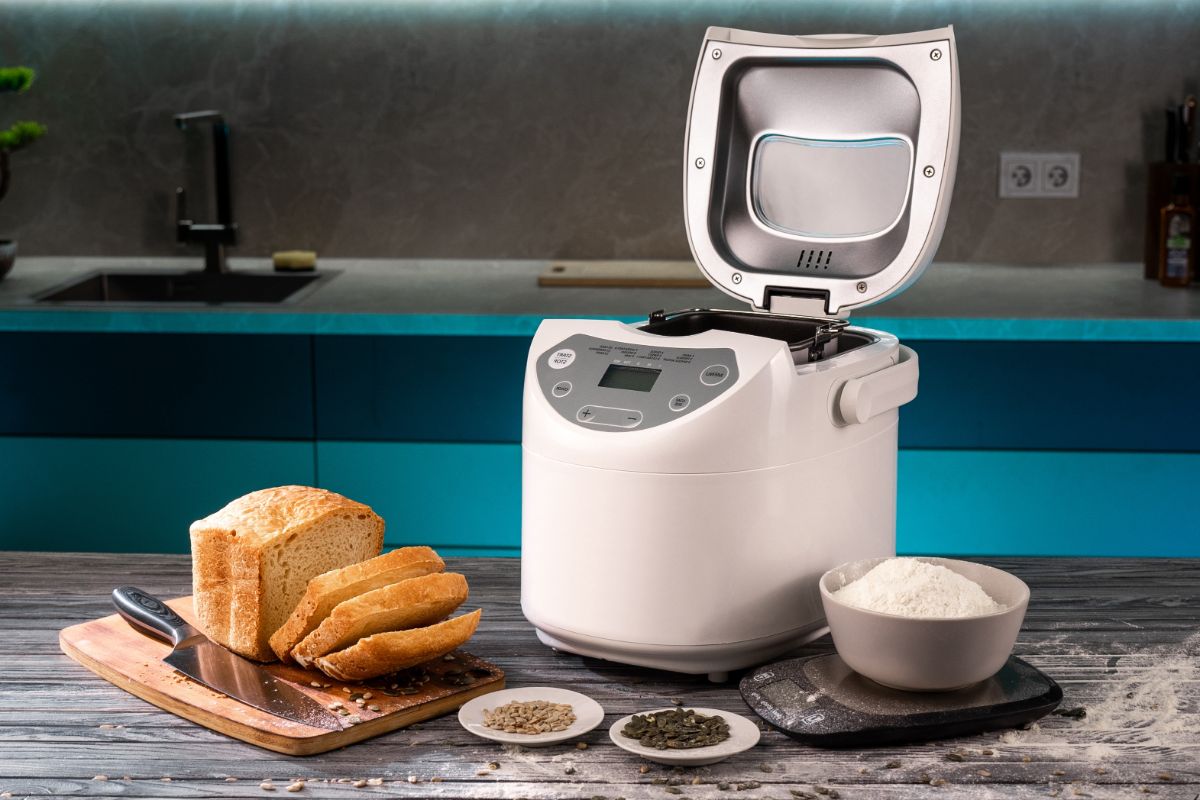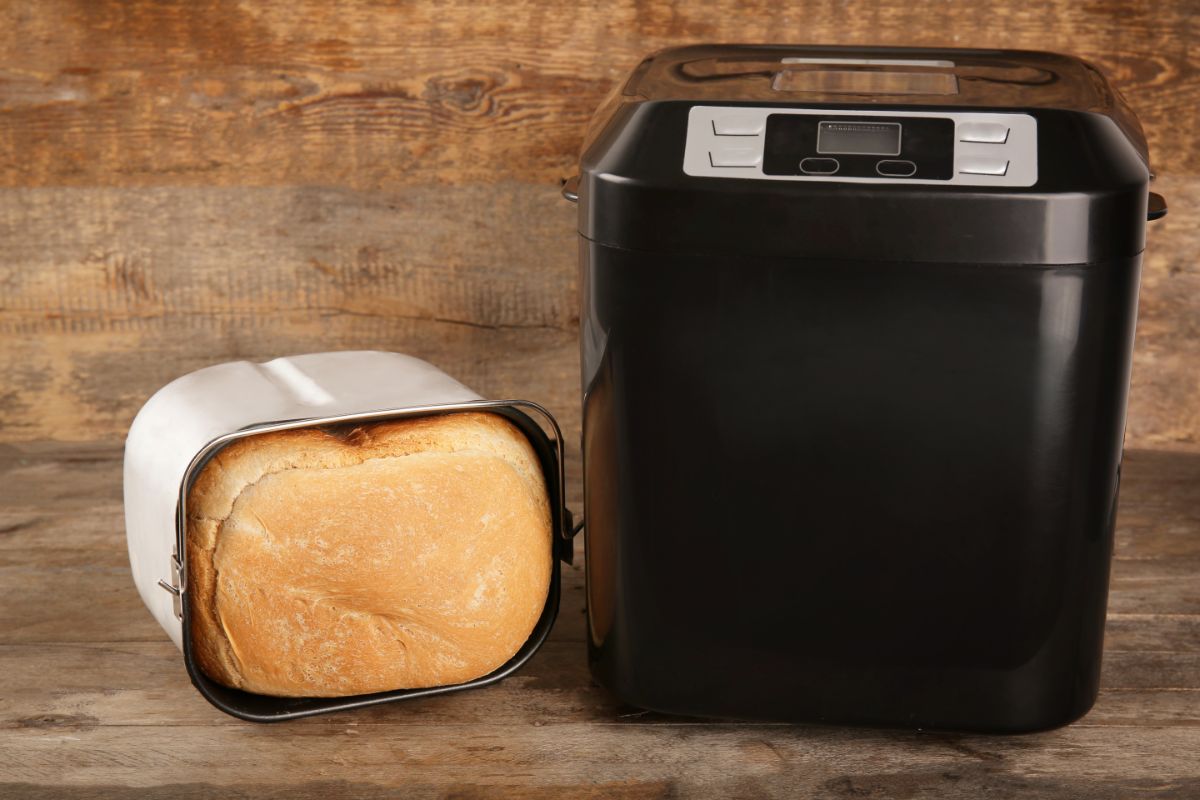We all love the heartwarming smell of fresh-baked products. But when it comes to washing your tools, this can be a turnoff to many. At first glance, you may be fazed by the parts. If you do it at the right time and in the right manner, you’ll enjoy this simple task.

So, how do you clean a bread maker? The cleaning process is straightforward. Every bread maker comes with instructions on regular maintenance – take a few minutes to read them. If you don’t have the manual, you can download it from the manufacturer’s website. Below you will find a step-by-step guide of cleaning your bread maker without damaging it.
Bread Machine Cleaning Steps
1. Remove crumbs and flour
First, unplug the unit from the power source and allow it to cool. It’s better to be safe than to regret it later. Use the butter-basting brush or small paintbrush to sweep the crumbs out of the machine.
Because your bread maker contains heating elements, it may continue to bake these “bread bits” with every new loaf. If you don’t remove the crumbs, they may compromise the performance of the appliance.
You may also experience burned smell every time you bake. Another way of removing the burned scraps is to use a non-abrasive cleaning cloth or a paper towel. Be gentle as you do the cleaning.
Never pour water into the appliance. If there’s some dough, allow it to dry. This will make the job easier without the additional mess. Another cautionary measure is that you should avoid getting the gears of your bread machine wet.
They operate the kneading plate, so they should not get into contact with milk or water. If there are some spills inside the machine, use a microfiber cloth. The longer the bits of dough and flour sit inside the machine, the harder it gets to remove them.
2. Clean the heating elements
When you leave your heating elements dirty, you pose a risk of fire. And because they are fragile, you should avoid using water. This area requires gentle cleaning.
If you notice there’s some dough in this area, use a microfiber cloth or a sponge to clean the entire length.
Do not use detergents, bleach, and other harsh chemicals. As you do the cleaning, avoid bending the heating elements in your bread maker.
3. Clean the bread pan
This is where you bake the dough. Just use a warm soapy cloth to wipe inside the pan and rinse. Make sure it dries completely. While most pans come with a non-stick coating, you may get occasional sticking.
If the bread pan is dishwasher safe, you can fill it with soapy water to remove the stickiness. Do not let the water sit for more than 30 minutes. Be sure to confirm the instruction manual.
It’s worth mentioning that most pans are not dishwasher safe because the underside requires lubrication. Any dough on the pan should be removed with a silicone/plastic spatula.
Never use a metal spatula as it may damage the non-stick surface leading to rust. Furthermore, avoid using abrasives as they can erode the finish. When you scratch the pan, it will start to deteriorate. If it flakes off, you may have to replace it.
4. Clean the kneading blade
The kneading blade is what kneads the dough. If your bread is not rising, the problem could be the blade. That being said, you should clean this part after baking.
Since most blades are removable, you should clean them by hand. If the blade gets stuck on the machine, add hot water to the pan and then try to remove it after 30 minutes.
Soaking the blade in soapy water will make the job easier. You can also remove the bits of bread that get stuck using a cleaning brush.
If the hole on the kneading blade gets clogged, you can use a toothpick to remove the bits of dough. Be careful to avoid crumbing the blades. After cleaning, make sure you dry the blade.
5. Clean the top and sides of the bread maker
While the color of the bread maker may change with time, it doesn’t affect the performance of the machine. Use a damp cloth to wipe the outside parts.
You can also use an old toothbrush to clean the air vents and crumbs that may be sticking on the outer surface of the machine.
Don’t immerse the body in water or splash any liquid as it may cause an electric shock. Instead, use a mild spray solution or abrasive liquid cleanser to avoid the build-up of stains.
Chemical cleaners can destroy the heating elements of the machine.
6. Assemble the parts
Once you’ve washed all the removable parts, you should return them to the machine. Make sure they are dry to avoid rust. Also, you should never use chemical dust-coat, steel wool pads, paint thinner, or Benzene.
This will extend the life of the machine. Close the lid and avoid placing anything on top.
You can also check the video below to see how to clean your bread machine:
How often should you clean the bread maker?
The general rule of thumb is to clean the appliance after you finish baking. This will ensure the machine runs smoothly year after year. Some people may be tempted to continue baking bread without cleaning the machine.
The problem with this idea is that you could end up leaving bits of bread crumbs. This may interfere with the quality of the bread.

Useful tips when cleaning your bread maker
After cleaning the bread pan, look at the underside and you’ll see a spindle shaft. Put some oil for proper lubrication. While the manual will have instructions on how to lubricate the machine, most of them don’t cover this maintenance step.
You should lubricate the appliance when it starts making unusual noises or at least once a month. If you don’t oil this part, the constant spinning may affect its functioning.
Use 3-in-1 sewing machine oil. Don’t use the cooking oil because it can ruin the seals. Another useful tip is that you should never apply too much pressure on the heating elements – you can easily detach them.
These parts are hard to replace. Clean the bread maker after every use to keep it in top-notch condition.
Final thoughts
We can’t deny the fact that the breadmakers have revolutionized life in the kitchen. Unfortunately, we forget to take proper care of them. The longer you take to clean your appliance, the harder it will be to clean it.
While regular cleaning may seem tedious, it will make your machine shine like it just got out of the box. Besides that, proper maintenance will make the bread maker stand the test of time.
Always refer to the instruction manual before you clean the appliance. You may want to follow the above instructions in your cleaning routine.
